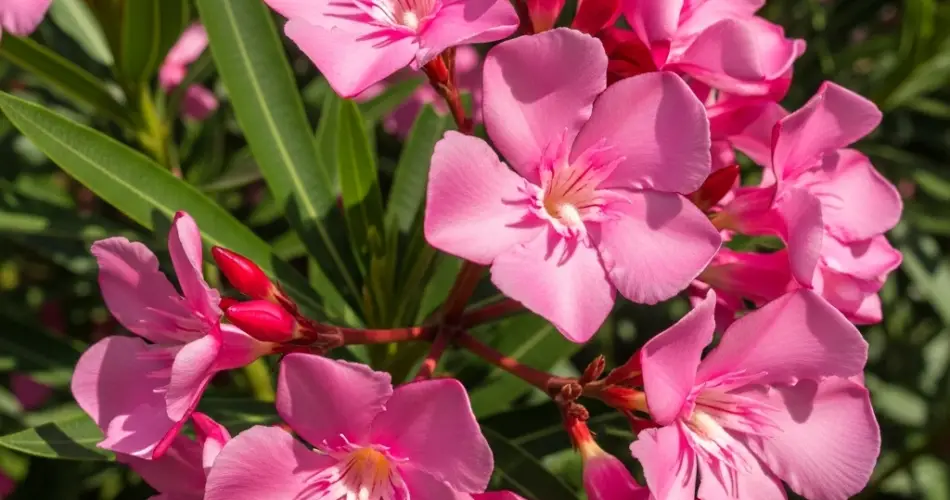Oleander (Nerium oleander) is a popular flowering shrub widely admired for its vibrant blooms and evergreen foliage. It thrives in warm climates and is often used in landscaping for its low maintenance and drought tolerance. What many people don’t realize is how easy it is to propagate oleander at home—even without commercial rooting hormones.
Whether you’re looking to expand your garden or give away plants to friends and family, oleander can be successfully reproduced through cuttings using nothing more than water, a sharp knife, and a bit of patience.
Here’s a step-by-step guide to propagating oleander from cuttings without the use of synthetic rooting aids.
Why Propagate Oleander from Cuttings?
There are several benefits to growing oleander from cuttings:
-
Fast results: Unlike growing from seed, cuttings produce mature plants much faster.
-
True to parent plant: Cuttings ensure the new plant retains the exact characteristics of the parent—color, size, and flowering pattern.
-
Cost-effective: No need to purchase new plants or expensive rooting hormones.
-
Satisfying: Watching a cutting develop roots and grow into a healthy shrub is rewarding for any gardener.
Important Safety Note
Before you begin, it’s crucial to know that all parts of the oleander plant are toxic if ingested. Always wear gloves when handling oleander and avoid contact with your eyes or mouth. Keep children and pets away from cuttings.
What You’ll Need
-
A mature, healthy oleander plant
-
A sharp, clean knife or garden shears
-
Clean water
-
A glass jar or vase
-
Optional: cinnamon (a natural antifungal and mild root stimulant)
-
A well-draining potting mix
-
Pots for transplanting
Step 1: Choose the Right Cutting
Select semi-hardwood cuttings from the oleander plant. These are branches that are not too young and soft, nor too old and woody. Ideal cuttings are around 15–20 cm (6–8 inches) long and taken from healthy stems with no signs of disease or damage.
Make the cut just below a leaf node (where the leaf attaches to the stem). This is the point where roots are most likely to emerge.
Step 2: Prepare the Cutting
Remove the lower leaves from the bottom half of the cutting, leaving just a few leaves at the top. This reduces water loss and encourages the plant to focus energy on root development.
If you want a natural alternative to rooting hormones, you can dip the cut end of the stem in cinnamon powder. Cinnamon has antifungal properties and may help prevent rot during the rooting process.
Step 3: Place in Water
Fill a clean jar or vase with water and place the prepared cutting inside. Make sure the part of the stem that had the leaves removed is submerged, but no leaves should touch the water, as they may rot.
Keep the jar in a warm, bright spot out of direct sunlight. Change the water every few days to keep it clean and prevent bacterial growth.
Step 4: Monitor Root Growth
Within two to four weeks, you should begin to see white roots forming from the stem. Wait until the roots are at least 2–3 cm (about an inch) long before transplanting into soil. This gives the young plant a better chance of survival.
Some cuttings may root faster than others. If a cutting begins to rot or doesn’t root after several weeks, discard it and try a new one.
Step 5: Transplant to Soil
Once the roots are well developed, it’s time to move the cutting into a pot with a well-draining potting mix. Use a small container at first to avoid overwatering.
-
Gently plant the rooted cutting in moist soil, being careful not to damage the delicate new roots.
-
Water lightly and place the pot in a bright location, avoiding harsh midday sun until the plant acclimates.
-
Keep the soil moist but not soggy during the first few weeks.
Step 6: Care for the Young Plant
After a few weeks in soil, the cutting will establish itself as a young plant. Continue to water it regularly and gradually introduce it to more sunlight. Oleander prefers full sun once established and will thrive in hot, dry conditions.
As it grows, you can transplant it to a larger pot or directly into the garden, depending on your climate.
Final Thoughts
Propagating oleander without rooting hormones is not only possible—it’s easy and highly effective. By following this simple water propagation method, you can reproduce numerous healthy, vibrant oleander plants at no extra cost.
With a bit of time and care, your garden can soon be filled with the lush greenery and striking flowers of this resilient Mediterranean shrub. Just remember to handle the plant with care due to its toxicity, and enjoy the satisfaction of multiplying your own ornamental plants at home.



